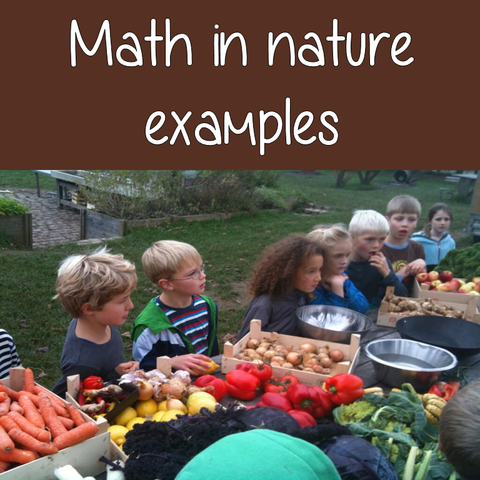What are good ways to teach math in nature?
Firstly, and probably most obvious, get outside. Take the class outside and collect leaves, pine cones, flowers and pictures of animals. Depending on the age of the children, count the parts, examine the math in nature patterns, draw and look at the different shapes, and work out what sequences can be seen. There are many ways to include number work as well as patterns and sequences with nature.
What is the role of mathematics in nature?
While it can be tempting to teach subjects completely separately from each other, in real life that is just not practical. In the real world, math, science and the arts all overlap. This means our lessons can as well. Children often ask how is math present in nature and it is an interesting question because the natural world is so closely related to mathematics it is impossible to separate them.
Taking children outside into nature and allowing them to explore opens so many opportunities for mathematical learning. Not only can we teach using mathematical language to describe the things they find outside, but they can also solve real problems and learn about patterns, and sequences and why mathematics not only relates to our natural world but comes from it!
Using sundials to learn about time, the petals of a flower to learn about Fibonacci sequences, bee hives for shapes and insects for symmetry. The opportunities for teaching math in nature are endless.
Teach young children about math in the natural world
Young learners love the outside, they learn so much from just exploring and collecting shapes and objects to examine. While this may seem that it is not related to mathematics it is a huge part of shape recognition. Using natural materials to create number problems and looking at the way nature connects are all parts of learning that require mathematical problem-solving.
How to teach math through nature with older children

It can be tempting to think these types of math in nature lessons can only work with younger ages, but this is not the case. Some very complex topics can be taught using nature. One of my favourites is teaching the Fibonacci sequence using the swirls and natural occurrences of the sequence in nature. I also teach about fractals and how they occur, using natural shapes in this way can be very educational and a great way to engage students in the math lesson.
Math in nature activities and resources
There are so many different activities you can use to bring mathematics into nature. Collecting natural objects is a great place to start for all ages. A fun math in nature activity is to categorise the objects by size, shape, corners, sequences, and types of patterns. Analyses the way they connect to each other, and try to replicate the patterns, shapes or sequences, this is also a great way to relate art to your lesson.
If you are looking for some complete ready-made lessons and math in nature lesson plans, take a look at my complete lesson on teaching the shapes in nature here.
I also have lessons on circles in nature and for fun and easy to understand topics I have lessons such as the Fibonacci sequence and fractals in nature.
All of my lessons include a math in nature video which demonstrates the learning and explains in detail the ideas from the lesson.
What are some math in nature examples?
Some examples of math in nature are the Fibonacci sequence in flowers, the spiral shape of shells, and the hexagonal shape of snowflakes. Other examples include the way tree branches grow in a spiral pattern, the way rivers meander, and the way galaxies are organized.

The hexagonal shape of snowflakes is also the result of mathematical patterns. Snowflakes form when water vapour in the atmosphere condenses around a dust particle. As the water vapour condenses, it forms a six-sided crystal. The six sides of the crystal grow at different rates, depending on the temperature and humidity. As the crystal grows, it forms a hexagonal shape.
These are just a few examples of the many ways that math is present in nature. So the next time you're out for a walk, take a closer look at the world around you and see if you can spot any more math in nature!
Check out my free resources and classroom activities here





